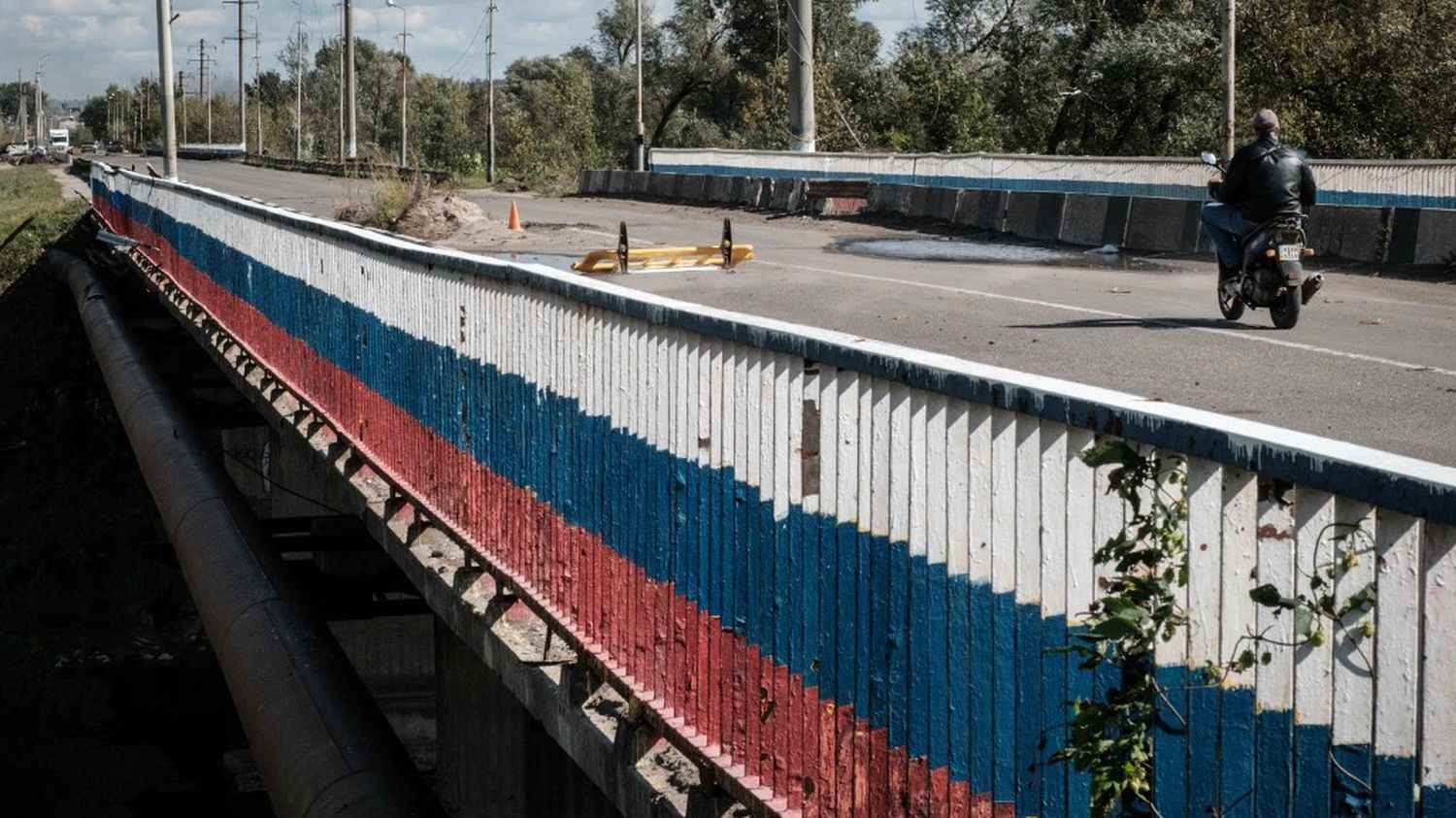“The armed forces crossed the Oskil. Since yesterday [samedi]Ukraine controls the left bank.” The strategic command of the Ukrainian army made this announcement on Sunday, September 18, by broadcasting a video accompanied by rock music. In these images, a tank borrows a mobile pontoon, which sinks into the water under its weight. Then the vehicle continues its way in front of soldiers in rows of onions, before engulfing itself on a dirt road wrinkled by a rut, which suggests the previous passage of other armored vehicles.

kyiv’s announcement was widely taken up in the international press, without much caution. “The Ukrainian army is good at communication and you shouldn’t get carried away”tempers Ulrich Bounat, geopolitical analyst and author of Hybrid warfare in Ukraine, what prospects? (ed. of the Swan). At this stage, there is indeed no “truly images of Ukrainian forces on the other side”. And pro-Russian sources or civilian testimonies do not yet mention any fighting. There is therefore no “not enough hindsight” to affirm that Ukraine massively crossed the Oskil.
It is not impossible, however, that “special forces crossed the river”. A lot of unverified information has been circulating for several days on social networks. On Friday, the Kraken special unit had notably claimed a crossing around Koupiansk. This battalion, distinct from the army, is made up of “individual groups” committed to “specific tasks”, explained to Radio France one of its commanders, at the end of August. With, for specialty, reconnaissance missions. Footage of an amphibious operation also surfaced, with a handful of men landing.
A stream is a difficult obstacle for troops to cross. Since September 11, peak of the Ukrainian counter-offensive in the Kharkhiv region, the river has served as a natural border between the two belligerents. The Ukrainian army, for its part, had broadcast images of Russian vehicles abandoned in the river after the withdrawal. “This river is not necessarily wide, but it constitutes an important natural dam”confirm Ulrich Bounat. “There were only three or four bridges between Izium and Kupiansk, which were destroyed by the way” or damaged.
“Crossing this watercourse requires significant logistics. By crossing it too soon, the Ukrainian forces also risked being isolated.”
Ulrich Bounat, geopolitical analystat franceinfo
The Russian forces are now entrenched in the East (right bank) and are trying to consolidate their positions. The whole challenge for kyiv is to establish bridgeheads on this bank, before considering the launch of possible offensives in the Luhansk region, Volodymyr Zelensky’s new objective. If so, it remains to be seen how the Ukrainian forces will be able to hold this watercourse. “It all depends on the ability of the Russian army to reconfigure or reform a defensive front east of the Oskil River”estimated on franceinfo Edouard Jolly, researcher at the Strategic Research Institute of the Military School (Irsem).

The exact outline of a future front line is still uncertain, but Russian forces do appear to be building up forces in Svatove, however. wrote on saturday (in English) the UK Ministry of Defence. About thirty kilometers, therefore, to the east of the river. “This line runs along the border of Luhansk Oblast”underlines the same source, while Russia is making the “liberation” of the Donbass “one of its immediate objectives”.
“There are not many cities and natural obstacles” to stop a possible Ukrainian progression between Svatove and Oskil, points out Ulrich Bounat, which can also explain this more withdrawn choice. The city, moreover, is served by an important road axis for the Russian forces (P66) and crossed by another river, the Krasna. Unsurprisingly, Ukraine is therefore carrying out strikes on this locality: it claims to have killed (in Ukrainian) 200 Russian soldiers housed in a city hotel, while local separatist authorities report seven civilian buildings destroyed (in Ukrainian).
In the meantime, fighting is still raging in the eastern part of Koupiansk, a city straddling the Oskil, with a pocket of Russian resistance that has still not yielded since the counter-offensive. Civilians are still trying to flee the shelling, while water and electricity shortages worsen. In the Southeast, the clashes are concentrated in Lyman, a town located on the Donets River and also cut in two. Taking this lock is just as crucial to open the road to Donbass.
In the event of a Ukrainian victory, the front could then move quickly towards Svatove and put the P66 within Ukrainian firing range, believes Ulrich Bounat. This would risk “cut off supplies from the border with Russia in the North” and of “put under pressure, in the long term, the Russian positions in Sloviansk and Severodonetsk”.
Given the context, the announcement of referendums on membership of Russia, in the separatist territories of Luhansk and Donetsk, is not surprising. Because these regions, if they are integrated into the Russian Federation, will in turn benefit from nuclear protection. What dissuade kyiv from committing its troops further to reconquer parts of the Donbass? According to Ulrich Bounat, the separatist referendum initiatives, and the favorable reception given to them by the Kremlin, testify in any case “operational difficulties of the Russian forces, which have lost the initiative in the sector.”
